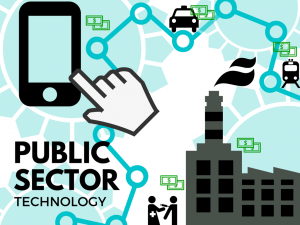Yet again, George Osborne is revealed as a master of the art of expectations Management. Following months of hints of politically painful cuts, we’d been expecting the Spending Review to create a sense of relief via last-minute reprieves, political and accounting fudges. In fact, the picture presented looked more like a series of rabbits pulled from Osborne’s hat rather than the U-turns described by the Opposition. Three leading analysts from Kable – Jessica Figueras, Andrena Logue and Alan Mo – have combined efforts to provide their views on the impact of the CSR on public sector technology.
[easy-tweet tweet=”Three analysts from Kable comment on how the #CSR will affect public sector #technology” user=”comparethecloud”]
Central Government
Thanks to more generous borrowing forecasts from OBR, and by quietly pushing back deficit reduction another year, Osborne was able to reduce the departmental resource savings target from £20bn to £12bn. Now, £9.5bn of savings will be “reinvested in the government’s priorities” rather than banked. This may explain the eye-catching promise to invest £1.8bn in digital transformation, much of which will probably be achieved by re-badging existing ICT programmes as ‘digital enabling’ rather than freeing up new money.
technology and digital are key pillars of this spending review
MoJ, Home Office and HMRC are where the most obvious gains from digitisation are to be found, and there was specific mention of digitising criminal justice in order to speed the closure of courts, and more money for border technology, including passports and immigration, as well as digital tax. All of these programmes are already underway, of course, though it’s good to know there is continuing support.
£450m for GDS was the biggest surprise, but an almost total lack of detail – and silence from Aviation House – suggests that this sum would be over 5 years, representing £90m a year – a 55% rise from its current £58m budget, which is still very generous. GaaP got a mention, but the only new common platform promised was GOV.UK Pay. We’d suspect the extra cash will be spent on GOV.UK Verify, which will need to be scaled up fast to support new digital services across government, rather than being used to fund GDS-led development projects; but we won’t know for sure until more detail is available. What isn’t yet clear is how this £450m is made up, and what GDS’ implementation plan is to deliver GaaP, GOV.UK Verify and GOV.UK Pay. Watch this space.
[easy-tweet tweet=”The promise to invest £1.8bn in #digital transformation will probably be achieved by re-badging existing #ICT programmes” via=”no” usehashtags=”no”]
Health and the NHS
From an NHS perspective the CSR provided a better settlement for the NHS, and NHSE CEO Simon Stevens takes the credit for all his lobbying. The frontloading of £3.8bn in 2016/17 should be well received by the majority, to potentially stave off the winter of discontent that has been looming.
On the tech side, there were few details on new money, which absolutely has to come through to support the upcoming digital maturity index and push interoperability, never mind day-to-day spend on core systems, which is lagging nationally. All of this has to be shored up to support the National Information Board’s 2020 digital and patient centric blueprint which plans to provide access to your health records in plain English on your smartphone.
The £10m promised to support the ‘Healthcare Innovation Test Bed’ programme will better position healthcare in a combined R&D and digital context, which feeds into economic hub strategies that many councils have developed.
Local Government
The ability to raise council tax by 2% to go towards adult social care may be welcomed by some, but it will have an unbalanced and unequal impact across the country. Localities with lower council tax receipts are often those with a higher proportion of the population eligible for social care; while many of the councils that have higher tax receipts also have a higher proportion of self-funders.
[easy-tweet tweet=”There are real questions over how local #digital best practice can be shared” user=”comparethecloud”]
So local authorities will not be able to rely on the 2%, and local areas will need to double up efforts towards health and care integration, and early intervention. With this in mind, the extra £1.5bn for the Better Care Fund (BCF) is a small positive, and could open up opportunities for technology use. It is clear that technology can play an important enabling role, and most existing BCF proposals confirm a growing call for single integrated customer records, with locally configurable workflow helping drive process integration. Although GDS gained £450m to drive digital transformation in Whitehall, local government seems to have missed out completely, and with the end of the Local Government Digital programme expected in March, there are real questions over how local digital best practice can be shared.

Andrena Logue, Research Director, Health, Kable
Andrena is Research Director, Health, at public sector technology analyst group, Kable. She supports incumbent and market entrant tech suppliers to respond to the changing dynamics of the UK health and social care sectors, by leveraging their core portfolios and channel partners, and drawing on best practice from across other healthcare jurisdictions.



